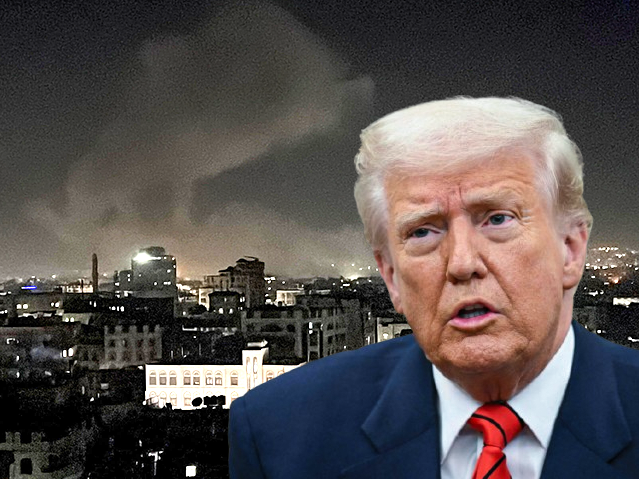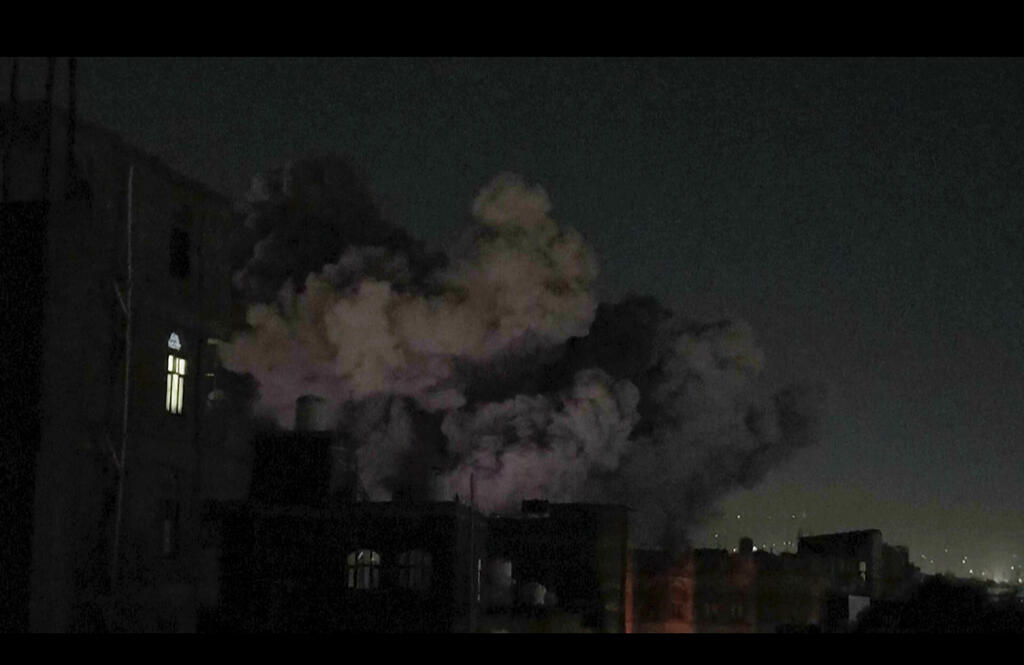Getting your Trinity Audio player ready...
The United States has entered the third week of airstrikes against Iran-backed Houthi militants in Yemen, with President Donald Trump declaring Thursday that the group is “begging” for the attacks to stop.
“Our strikes every day and night have been extremely successful — beyond our wildest expectations,” Trump told reporters. “We will do this for a long time — we can keep going. They want us to stop so badly.”
The U.S. military campaign, which began March 15, has targeted dozens of sites across Houthi-controlled territory, including Sanaa International Airport and locations in the provinces of Saada, Hudaydah, Al-Jawf, Amran and Marib. Civilian neighborhoods in the capital, Sanaa, were also struck late Thursday, according to local reports.
At least seven civilians were injured in Sanaa, Yemen’s Health Ministry spokesperson Anis al-Asbahi told Hezbollah-affiliated Al-Mayadeen television. Houthi officials said 57 people have been killed since the strikes began.
Despite the sustained air campaign, the Houthis have continued to launch missile and drone attacks toward Israel and U.S. naval assets in the region. They have also disrupted international shipping in the Red Sea, forcing commercial vessels to bypass the Suez Canal and reroute around Africa.
The U.S. has accused the Houthis of receiving nearly a decade of military support from Iran, including weapons and training. A senior U.S. defense official told The Wall Street Journal that several senior Houthi leaders have been killed in the strikes, adding, “The Houthis are known for false claims that downplay our operations and exaggerate their own success.”
The new offensive marks a shift from previous U.S. strategy under former President Joe Biden, who focused primarily on degrading Houthi weapons capabilities. The current operation, led by the Trump administration, has directly targeted leadership figures and infrastructure in the mountainous north, where the Houthis are believed to maintain weapons stockpiles, underground production lines and launch sites.
Houthi leader Abdul-Malik al-Houthi has reportedly instructed his fighters to avoid using mobile phones to evade detection.
Officials in Yemen’s internationally recognized government, based in the southern city of Aden, expressed skepticism that the air campaign would deliver a decisive blow. “It’s good, but not enough,” one government official said. “Airstrikes by themselves won’t defeat the Houthis.”
On Thursday, The Wall Street Journal reported that Israel provided the U.S. with sensitive intelligence used in the operation, sourced from an asset inside Yemen. The intelligence reportedly led to a strike targeting a senior figure in the Houthi military network.
Details of the strike were shared in a private Signal group chat between senior Trump administration officials, including Vice President J.D. Vance, Secretary of State Marco Rubio, Secretary of Defense Pete Hegseth, CIA Director John Ratcliffe and National Security Advisor Mike Waltz.
On March 15, shortly after the strike, Waltz wrote in the chat: “Vice President, the building collapsed. We have some positive identifications.” Vance, appearing confused, replied: “What?” Waltz then clarified: “The first target—their senior missile expert—we have positive ID of him going into his girlfriend’s house, then it collapsed.” CIA Director Ratcliffe responded: “Good start,” and Waltz followed with emojis of a fist, an American flag and flames.
The chat messages were inadvertently exposed after The Atlantic editor-in-chief Jeffrey Goldberg was mistakenly added to the Signal group. The incident caused embarrassment for the White House and raised concerns among Israeli officials, who reportedly expressed displeasure to their U.S. counterparts over the breach.
Get the Ynetnews app on your smartphone: Google Play: https://bit.ly/4eJ37pE | Apple App Store: https://bit.ly/3ZL7iNv
White House National Security Council spokesperson Brian Hughes said the leaked messages “did not contain classified information.” He added, “The messages did not include locations, sources, patterns or war plans,” and emphasized that U.S. allies were briefed in advance of the strikes.




